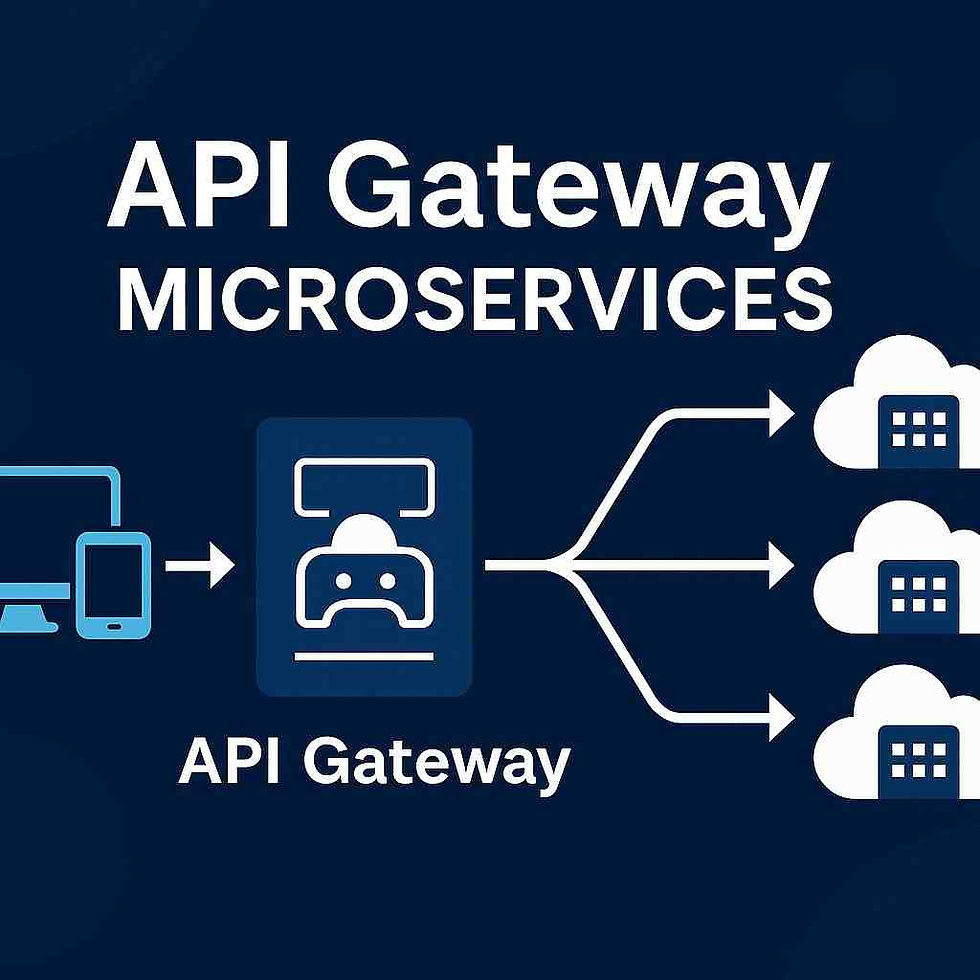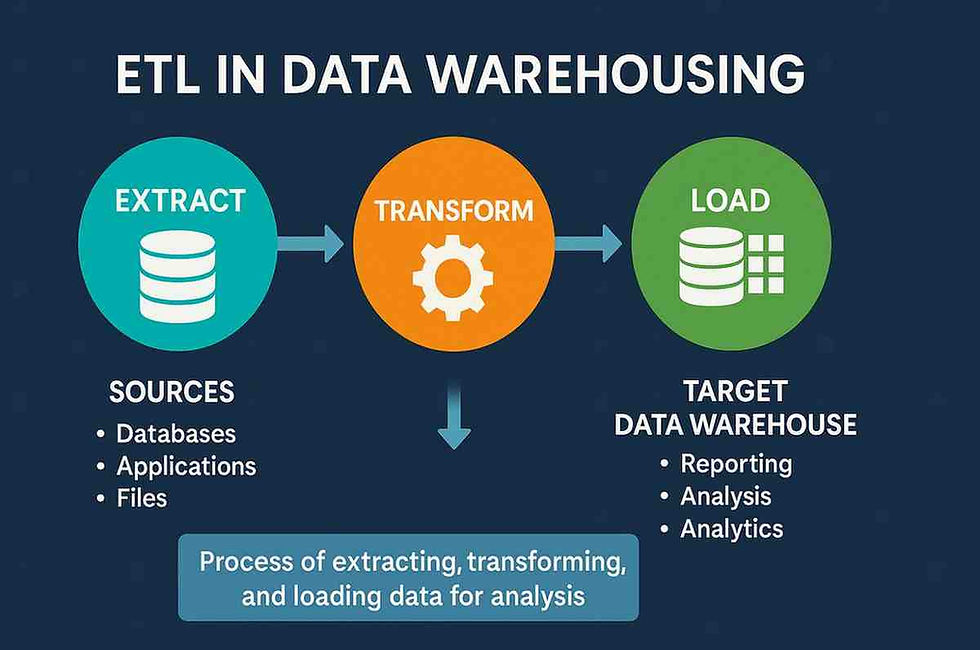Salesforce Triggers Guide 2025: Expert Best Practices & Implementation Tips
- Gunashree RS
- Jul 3
- 8 min read
Updated: Jul 4
What Are Salesforce Triggers and Why Do They Matter?
Salesforce triggers are powerful pieces of Apex code that execute automatically when specific database events occur, such as record insertions, updates, or deletions. In today's data-driven business environment, Salesforce revenue is expected to reach $37.8 billion to $38.0 billion in 2025 from $34.9 billion in 2024, highlighting the platform's growing importance in enterprise operations.

Q: What exactly happens when a trigger fires?
A: When a trigger fires, it executes before or after the triggering event, allowing you to perform custom logic like data validation, field updates, or external system integration. This automation capability makes triggers essential for maintaining data integrity and business process automation.
According to recent industry data, Salesforce had a whopping 72,682 employees worldwide as of January 31, 2024, indicating the massive scale of development work being done on the platform. Understanding triggers is crucial for any developer working in this ecosystem.
When Should You Use Salesforce Triggers?
Q: How do I know when to use a trigger versus other automation tools?
A: Triggers are ideal when you need complex logic that can't be handled by declarative tools like Process Builder or Flow. Always look for a declarative solution first, as recommended by Salesforce experts, but triggers become necessary for:
Complex data validation across multiple objects
Bulk operations requiring optimal performance
Integration with external systems requiring immediate response
Custom business logic that exceeds Flow capabilities
Key scenarios where triggers excel:
Data Validation: Implementing complex business rules that span multiple objects
Bulk Data Processing: Handling large datasets efficiently without hitting governor limits
Real-time Integration: Synchronizing data with external systems immediately
Custom Automation: Creating sophisticated business processes beyond standard automation tools
Understanding Trigger Types and Events
Q: What are the different types of triggers available in Salesforce?
A: Salesforce provides several trigger events that execute at different points in the database operation lifecycle:
Before Triggers
before insert: Executes before records are inserted into the database
before update: Runs before existing records are updated
before delete: Fires before records are deleted
After Triggers
after insert: Executes after records are successfully inserted
after update: Runs after records are updated and committed
after delete: Fires after records are deleted
after undelete: Executes when records are restored from the recycle bin
Q: Which trigger type should I choose for my use case?
A: The choice depends on your specific requirements:
Use before triggers for data validation and field updates on the same record
Use after triggers for operations involving related records or external systems
Before triggers are more efficient for the same-record modifications since they don't require additional DML operations
Best Practices for Salesforce Trigger Development
Q: What are the most important best practices for writing efficient triggers?
A: Industry experts consistently recommend several critical practices. As a result, implementing all trigger logic for a single event in a single trigger per object is a Coding best practice, which helps maintain code organization and system performance.
1. One Trigger Per Object Rule
Why this matters: Having multiple triggers on the same object can lead to unpredictable execution order and maintenance nightmares.
Implementation:
trigger AccountTrigger on Account (before insert, before update, after insert, after update) {
if (Trigger.isBefore) {
if (Trigger.isInsert) {
// Handle before insert logic
}
if (Trigger.isUpdate) {
// Handle before update logic
}
}
if (Trigger.isAfter) {
if (Trigger.isInsert) {
// Handle after insert logic
}
if (Trigger.isUpdate) {
// Handle after update logic
}
}
}2. Bulkification is Non-Negotiable
Q: How do I ensure my triggers can handle bulk operations?
A: It is important to avoid redundancies and inefficiencies when deploying multiple triggers on the same object. Always write triggers to handle multiple records:
Good Practice:
trigger ContactTrigger on Contact (before insert) {
Set<Id> accountIds = new Set<Id>();
for (Contact con : Trigger.new) {
accountIds.add(con.AccountId);
}
Map<Id, Account> accountMap = new Map<Id, Account>([
SELECT Id, Name FROM Account WHERE Id IN :accountIds
]);
for (Contact con : Trigger.new) {
if (accountMap.containsKey(con.AccountId)) {
// Process contact with account information
}
}
}3. Implement Proper Error Handling
Statistical insight: With 71% of organizations concerned about security threats in AI implementations, proper error handling becomes even more critical for data integrity.
Error handling pattern:
try {
// Trigger logic here
} catch (Exception e) {
// Log error and add to trigger record
Trigger.new[0].addError('Error processing record: ' + e.getMessage());
}Common Trigger Patterns and Anti-Patterns
Q: What are some common mistakes developers make with triggers?
A: Based on years of Salesforce development experience, here are the most frequent anti-patterns:
Anti-Patterns to Avoid
SOQL in Loops: Never query inside a for loop
DML in Loops: Avoid insert/update/delete operations inside loops
Recursive Triggers: Not implementing proper recursion control
Hardcoded Values: Using hardcoded IDs or values that vary between orgs
Proven Patterns for Success
The Handler Pattern:
trigger AccountTrigger on Account (before insert, before update, after insert, after update) {
AccountTriggerHandler handler = new AccountTriggerHandler();
if (Trigger.isBefore) {
if (Trigger.isInsert) {
handler.beforeInsert(Trigger.new);
}
if (Trigger.isUpdate) {
handler.beforeUpdate(Trigger.new, Trigger.oldMap);
}
}
if (Trigger.isAfter) {
if (Trigger.isInsert) {
handler.afterInsert(Trigger.new);
}
if (Trigger.isUpdate) {
handler.afterUpdate(Trigger.new, Trigger.oldMap);
}
}
}Testing Strategies for Salesforce Triggers
Q: How do I properly test my triggers to ensure they work in production?
A: Testing is crucial given that the supply of Salesforce professionals grew by 19% last year, meaning more developers need to understand proper testing methodologies.
Essential Testing Components
Positive Test Cases: Test expected functionality with valid data
Negative Test Cases: Test error handling with invalid data
Bulk Testing: Test with 200+ records to simulate real-world scenarios
Edge Cases: Test boundary conditions and unusual data combinations
Sample Test Structure:
@IsTest
private class AccountTriggerTest {
@IsTest
static void testBulkInsert() {
List<Account> accounts = new List<Account>();
for (Integer i = 0; i < 200; i++) {
accounts.add(new Account(Name = 'Test Account ' + i));
}
Test.startTest();
insert accounts;
Test.stopTest();
// Assert expected behavior
List<Account> insertedAccounts = [SELECT Id, Name FROM Account];
System.assertEquals(200, insertedAccounts.size());
}
}Performance Optimization for Triggers
Q: How can I optimize my triggers for better performance?
A: Performance optimization is critical, especially considering that 67% of sales reps don't expect to meet their quota this year, making system efficiency even more important for user productivity.
Key Optimization Strategies
Minimize SOQL Queries: Use maps and sets to reduce database calls
Leverage Indexes: Ensure your queries use indexed fields
Batch Operations: Group DML operations when possible
Selective Execution: Only execute logic when necessary conditions are met
Performance Pattern Example:
trigger OpportunityTrigger on Opportunity (after update) {
// Only process if the stage has changed
List<Opportunity> changedOpportunities = new List<Opportunity>();
for (Opportunity opp : Trigger.new) {
Opportunity oldOpp = Trigger.oldMap.get(opp.Id);
if (opp.StageName != oldOpp.StageName) {
changedOpportunities.add(opp);
}
}
if (!changedOpportunities.isEmpty()) {
// Process only changed opportunities
OpportunityTriggerHandler.processStageChanges(changedOpportunities);
}
}Advanced Trigger Techniques
Q: What advanced techniques can help me build more sophisticated triggers?
A: Advanced trigger development requires understanding complex patterns and integration scenarios. To make a callout from a trigger, call a class method that executes asynchronously, which is essential for external system integration.
Asynchronous Processing
When triggers need to interact with external systems, use future methods:
public class TriggerCalloutHandler {
@future(callout=true)
public static void makeExternalCallout(List<Id> recordIds) {
// External system integration logic
HttpRequest req = new HttpRequest();
req.setEndpoint('https://external-system.com/api/update');
req.setMethod('POST');
// Additional callout logic
}
}Trigger Frameworks
Consider implementing a trigger framework for enterprise-scale development:
public abstract class TriggerHandler {
public abstract void beforeInsert(List<SObject> newRecords);
public abstract void afterInsert(List<SObject> newRecords);
public abstract void beforeUpdate(List<SObject> newRecords, Map<Id, SObject> oldMap);
public abstract void afterUpdate(List<SObject> newRecords, Map<Id, SObject> oldMap);
public void run() {
if (Trigger.isBefore) {
if (Trigger.isInsert) {
beforeInsert(Trigger.new);
} else if (Trigger.isUpdate) {
beforeUpdate(Trigger.new, Trigger.oldMap);
}
}
if (Trigger.isAfter) {
if (Trigger.isInsert) {
afterInsert(Trigger.new);
} else if (Trigger.isUpdate) {
afterUpdate(Trigger.new, Trigger.oldMap);
}
}
}
}Conclusion
Salesforce triggers represent a fundamental building block for enterprise-scale automation and data integrity. With Salesforce capitalization growing to $252.58 billion in 2024, mastering trigger development becomes increasingly valuable for developers and organizations alike.
The key to successful trigger implementation lies in following established best practices, understanding performance implications, and designing for scalability from the beginning. Whether you're building simple data validation rules or complex integration scenarios, the patterns and techniques outlined in this guide will help you create robust, maintainable solutions.
Remember that triggers are just one tool in the Salesforce automation toolkit. Always evaluate whether declarative solutions can meet your requirements before implementing custom code, but when triggers are necessary, implement them with the discipline and attention to detail they deserve.
Key Takeaways
• One trigger per object: Maintain a single trigger per object to ensure predictable execution order and easier maintenance
• Bulkification is essential: Always write triggers to handle multiple records efficiently, never assume single-record processing
• Use proper error handling: Implement comprehensive exception handling to maintain data integrity and provide meaningful error messages
• Follow the handler pattern: Separate trigger logic into handler classes for better organization and testability
• Test thoroughly: Include positive, negative, bulk, and edge case testing to ensure production readiness
• Optimize for performance: Minimize SOQL queries, leverage indexes, and use selective execution patterns
• Consider asynchronous processing: Use future methods for external system integration to avoid blocking database operations
• Implement recursion control: Prevent infinite loops by implementing proper recursion detection and control mechanisms
• Use trigger frameworks: Consider implementing enterprise-scale trigger frameworks for large organizations
• Monitor and maintain: Regularly review trigger performance and update as business requirements evolve
Frequently Asked Questions
Q: What's the difference between before and after triggers?
A: Before triggers execute before the record is committed to the database, making them ideal for validation and field updates on the same record. After triggers execute after the record is saved, making them perfect for operations involving related records or external systems.
Q: Can I have multiple triggers on the same object?
A: While technically possible, it's not recommended. Having multiple triggers on the same object can lead to unpredictable execution order and maintenance challenges. Follow the one-trigger-per-object best practice instead.
Q: How do I prevent recursive trigger execution?
A: Implement static variables or use a trigger framework with built-in recursion control. Create a static boolean flag that prevents re-execution of the same trigger logic within the same transaction.
Q: What are governor limits, and how do they affect triggers?
A: Governor limits are Salesforce's way of ensuring fair resource usage across all users. Triggers must operate within these limits, including SOQL queries (100 synchronous), DML statements (150), and CPU time (10 seconds synchronous).
Q: When should I use triggers vs. Process Builder or Flow?
A: Use declarative tools (Process Builder, Flow) for simple automation. Choose triggers when you need complex logic, bulk processing optimization, or functionality that exceeds declarative tool capabilities.
Q: How do I debug trigger issues in production?
A: Use debug logs, system debug statements, and custom logging frameworks. Implement proper error handling with meaningful error messages, and consider using custom settings to enable/disable trigger logic for troubleshooting.
Q: Can triggers call external web services?
A: Not directly. Triggers cannot make synchronous callouts, but they can call future methods or queueable jobs that perform asynchronous callouts to external systems.
Q: What's the execution order when multiple automation tools are involved?
A: The order is: validation rules, before triggers, duplicate rules, after triggers, assignment rules, auto-response rules, workflow rules, processes, escalation rules, and finally roll-up summary field calculations.




INDOVIP138
indovip138
indovip138
indovip138
indovip138
indovip138
indovip138
indovip138
indovip138
indovip138
indovip138
indovip138
indovip138
indovip138
indovip138
indovip138
indovip138
indovip138
indovip138
indovip138
indovip138
indovip138
indovip138
indovip138
indovip138
indovip138
indovip138
indovip138
indovip138
indovip138
indovip138
indovip138
indovip138
indovip138
indovip138
indovip138
indovip138
indovip138
indovip138
indovip138
indovip138
indovip138
indovip138
indovip138
indovip138
Link INDOVIP138
indovip138
indovip138
indovip138
indovip138
indovip138
indovip138
indovip138
indovip138
indovip138
indovip138
indovip138
indovip138
indovip138
indovip138
indovip138
indovip138
indovip138
indovip138
indovip138
indovip138
indovip138
indovip138
indovip138
indovip138
indovip138
indovip138
indovip138
indovip138
indovip138
indovip138
indovip138
indovip138